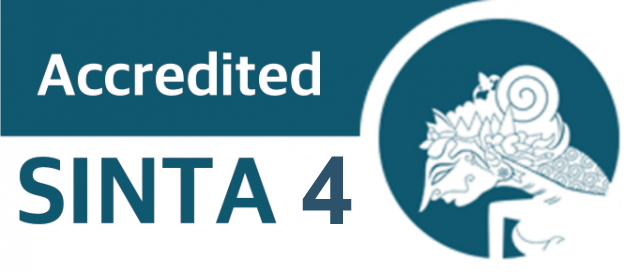Phytoplankton Diversity as a Bioindicator for Coastal Water Quality of Kecinan Beach North Lombok Regency
DOI:
10.29303/jpm.v20i1.7507Published:
2025-01-30Issue:
Vol. 20 No. 1 (2025)Keywords:
Abundance; Bioindicators; Diversity; Kecinan Beach; PhytoplanktonArticles
Downloads
How to Cite
Downloads
Metrics
Abstract
Kecinan Beach is one of the beaches on Lombok Island with many tourism activities. The activities in Kecinan Beach can influence the water quality, as the waters may receive waste from surrounding areas, leading to potential pollution or a decline in water quality. Phytoplankton are living organisms that can indicate whether a water body is polluted, which can be marked by changes in the community structure of phytoplankton, particularly in abundance and diversity. Water quality based on phytoplankton diversity as a bioindicator in Kecinan Beach has not been reported. This study was conducted to analyze the water quality of Kecinan Beach based on phytoplankton diversity as a bioindicator. Samplings were carried out in 9 sites in 3 stations during the month of March to June 2024. Samples were collected using a plankton net of 20µm mesh size. Samples were preserved in 4% formalin preservation and laboratory observation was conducted in the biology laboratory of FMIPA University of Mataram. The study identified 56 species from 3 classes, 21 families and 30 phytoplankton genera. The phytoplankton abundance in the coastal waters of Kecinan Beach was 126.667 ind/L. The species dominance index of phytoplankton of coastal waters of Kecinan Beach was 0.258, indicating no species dominance to each other. Rhabdonema arcuatum was identified as the highest (158%) species importance value. The species diversity index of phytoplankton of the coastal waters of Kecinan Beach was a moderate category. Based on the species diversity index, it can be said that the waters of Kecinan Beach are not polluted.
References
Diskominfo Lombok Utara, "Kabupaten Lombok Utara Dalam Data 2021," Dinas Komunikasi Dan Informatika Kabupaten Lombok Utara. 2021.
M. Syahdina, S. Hilyana, and M. Rizqi Himawan, “Analisis Kesesuaian dan Daya Dukung Wisata Pantai Kecinan Sebagai Kawasan Ekowisata Bahari di Desa Malaka, Kabupaten Lombok Utara,” J. Sos. Ekon. Dan Hum., vol. 9, no. 1, pp. 48–53, 2023, doi: 10.29303/jseh.v9i1.234.
S. Wijiyono dan Artiningsih," Keanekaragaman fitoplankton di dalam kolam bioremediasi di PTAPB – batan Yogyakarta," Prosiding Seminar Penelitian Dan Pengelolaan Perangkat Nuklir. Yogyakarta, 2013.
A. Imran, “Struktur Komunitas Plankton Sebagai Bioindikator Pencemaran Di Perairan Pantai Jeranjang Lombok Barat,” J. Ilm. Mandala Educ., vol. 2, no. 1, p. 1, 2018, doi:10.58258/jime.v2i1.17.
P. Ramond et al., “Phytoplankton taxonomic and functional diversity patterns across a coastal tidal front,” Sci. Rep., vol. 11, no. 1, pp. 1–15, 2021, doi: 10.1038/s41598-021-82071-0.
P. Kumar, V. Suat Erturk, R. Banerjee, M. Yavuz, and V. Govindaraj, “Fractional modeling of plankton-oxygen dynamics under climate change by the application of a recent numerical algorithm,” Phys. Scr., vol. 96, no. 12, pp. 1–15, 2021, doi: 10.1088/1402-4896/ac2da7.
A. Gunawan, N. Hariani, and Budiman, “Evaluasi Kualitas Perairan Berdasarkan Diversitas dan Strukur Komunitas Plankton pada Kolam Bekas Tambang Batubara yang terdapat Aktivitas Keramba Ikan di Tenggarong Seberang,” Pros. Semin. FMIPA Unmul, vol. 1, no. 1, pp. 1–9, 2015.
S. Armiani and B. M. Harisanti, “Hubungan Kemelimpahan Fitoplankton dengan Faktor Lingkungan di Perairan Pantai Desa Madayin Lombok Timur,” J. Pijar Mipa, vol. 16, no. 1, pp. 75–80, 2021, doi: 10.29303/jpm.v16i1.1862.
S. Armiani, “Komposisi dan Kemelimpahan Jenis Fitoplankton di Perairan Pelabuhan Carik Kecamatan Bayan Kabupaten Lombok Utara,” Panthera J. Ilm. Pendidik. Sains dan Terap., vol. 1, no. 1, pp. 74–78, 2021, doi: 10.36312/pjipst.v1i1.24.
D. Diniariwisan and T. B. C. Rahmadani, “Kondisi Kelimpahan dan Struktur Komunitas Fitoplankton Di Perairan Pantai Senggigi Kabupaten Lombok Barat,” J. Perikan., vol. 13, no. 2, pp. 387–395, 2023, doi: http://doi.org/10.29303/jp.v13i2.504.
S. Fuad, M. A. Z., Yona, D., Sartimbul, A., L. A. B., Iranawati, F., Hidayati, N., and M. A. Hariyan., Sari, S. H. J., dan Rahman, "Metode Penelitian Kelautan dan Perikanan-Prinsip Dasar Penelitian, Pengambilan Sampel, Analisis, dan Interpretasi Data," Malang: UB Press, 2019.
G. Smith, "The Fresh Water Algae of United States of America," New york. America: McGraw Hill, 1950.
C. Davis, C, "The Marine and Freshwater Plankton," Chicago: Michigan State University Press, 1955.
I. Yamaji, "Illustrations of The Marine Plankton of Japan 3rd Eddition," Japan: Hoikusha Publishing Co, Ltd, 1984.
L. W. W. Graham, L.E., J.M. Graham, "Algae Edisi Kedua," San Francisco, USA.: Pearson Education Inc. publishing as Pearson Benjamin Cumming, 2009.
S. Romimuhtarto, K., dan Juwana, "Biologi Laut: Ilmu Pengetahuan Tentang Biota Laut," Jakarta: Djambatan, 2001.
E. P. Odum, "Dasar-Dasar Ekologi Edisi Ketiga," Yogyakarta: . Gadjah Mada, 1993.
F. . Fachrul, "Metode Sampling Bioekologi," Jakarta: Bumi Aksara, 2007.
D. . Bengen, "Pengenalan dan Pengelolaan Ekosistem Mangrove," Bogor: Pusat Kajian Sumber daya Pesisir dan Lautan IPB, 2000.
T. A. Barus, "Limnologi,". Makassar: CV. Nas Media Pustaka, 2020.
M. N. dan D. P. H. Muliawati Handayani, “Variasi Dan Kelimpahan Plankton Di Perairan Brondong, Kabupaten Lamongan,” BAWAL, vol. 16, no. 1, pp. 1–10, 2024, doi: http://dx.doi.org/10.15578/bawal.1
1.2024.1-10.
Y. S. Hadi, L. Japa, and L. Zulkifli, “Bacillariophyceae Diversity as Bioindicator of Pollution in the Coastal Waters of Klui Beach, North Lombok,” J. Biol. Trop., vol. 23, no. 1, pp. 86–92, 2023, doi: 10.29303/jbt.v23i1.4387.
M. Manurung, E. I. Warpopor, and C. M. Masengi, “Identifikasi Jenis Fitoplankton di Perairan Sungai Remu, Kota Sorong,” J. Soc. Sci. Res., vol. 3, no. 4, pp. 8814–8827, 2023, doi: https://doi.org/10.31004/
innovative.v3i6.6 168.
M. H. Anas, L. Japa, and K. Khairuddin, “Phytoplankton Community as A Bioindicator for Water Quality of Sumi Dam, Bima Regency,” J. Biol. Trop., vol. 22, no. 1, pp. 244–250, 2022, doi: 10.29303/jbt.v22i1.3109.
A. Hafifah, A. Al Idrus, and L. Japa, “Phytoplankton as Bioindikator of Water Quality in The Batu Dendeng River West Lombok,” J. Biol. Trop., vol. 23, no. 3, pp. 564–571, 2023, doi: 10.29303/jbt.v23i3.5407.
F. Ikhsan, Sunarto, and N. Isni, “Korelasi Kelimpahan Plankton Dengan Suhu Perairan Laut Di Sekitar PLTU Cirebon,” J. Perikan. Kelaut., vol. 7, no. 1, pp. 115–122, 2016.
J. W. Nybakken, Biologi Laut; Suatu Pendekatan Ekologis. Jakarta: PT Gramedia Pustaka Utama, 1992.
A. Y. Al-Handal, A. Torstensson, and A. Wulff, “Revisiting Potter Cove, King George Island, Antarctica, 12 years later: New observations of marine benthic diatoms,” Bot. Mar., vol. 65, no. 2, pp. 81–103, 2022, doi: 10.1515/bot-2021-0066.
“Peraturan Pemerintah Republik indonesia Nomor 22 Tahun 2021 tentang Penyelenggaraan Perlindungan dan Pengelolaan Lingkungan Hidup.”
N. Rahmah, A. Zulfikar, and T. Apriadi, “Kelimpahan Fitoplankton dan Kaitannya dengan Beberapa Parameter Lingkungan Perairan di Estuari Sei Carang Kota Tanjungpinang,” J. Mar. Res., vol. 11, no. 2, pp. 189–200, 2022, doi: 10.14710/jmr.v11i2.32945.
E. A. Nurcahyani et al., “Distribusi Dan Kelimpahan Fitoplankton Yang Berpotensi Menyebabkan Habs (Harmful Algal Blooms) di Muarasungai Banjir Kanal Timur, Semarang,” Diponegoro J. Maquares, vol. 5, no. 4, pp. 275–284, 2016, doi: https://doi.org/10.14710/marj.v5i4.14421.
E. Supriyantini, M. Munasik, S. Sedjati, S. Y. Wulandari, A. Ridlo, and E. Mulya, “Kajian Pencemaran Perairan Pulau Panjang, Jepara Berdasarkan Indeks Saprobik dan Komposisi Fitoplankton,” Bul. Oseanografi Mar., vol. 9, no. 1, pp. 27–36, 2020, doi: 10.14710/buloma.v9i1.27276.
M. G. & T. W. S. Martina Ulfaturrahmi, Dining Aidil Candri, Lalu Japa, “Jurnal Biologi Tropis Phytoplankton Diversity as a Bioindicator for Water Quality of Pertamina,” J. Biol. Trop. Orig., vol. 24, no. 1, pp. 814 – 820, 2024, doi: http://dx.doi.org/10.29303/jbt.v24i1.6603.
T. Tisanianti, D. A. Candri, and L. Japa, “Phytoplankton diversity as a bioindicator for water quality of Tanjung Aan, SEZ Mandalika Central Lombok,” J. Pijar Mipa, vol. 18, no. 5, pp. 816–821, 2023, doi: 10.29303/jpm.v18i5.5487.
J. Basmi, Planktonologi: Produksi Primer. Bogor: Fakultas Perikanan Institut Pertanian Bogor, 1995.
I. Paryantini, D. A. Candri, and L. Japa, “Phytoplankton diversity as a bioindicator for water quality of siwak bay, Specific Economic Zone (SEZ) Mandalika Central Lombok,” J. Pijar Mipa, vol. 18, no. 5, pp. 829–834, Sep. 2023, doi: 10.29303/jpm.v18i5.5497.
B. . Lantang and S. Pakidi, C, “Identifikasi Jenis Dan Pengaruh Faktor Oseanografi Terhadap Fitoplankton Di Perairan Pantai Payum Pantai Lampu Satu Kabupaten Merauke Bonny,” J. Agribisnis dan Perikan., vol. 8, no. 2, pp. 1–7, 2015, doi: 10.29239/j.agrikan.8.2.13-19.
N. L. G. R. A. Saraswati, Y. -, A. Rustam, H. L. Salim, A. Heriati, and E. Mustikasari, “Kajian Kualitas Air Untuk Wisata Bahari Di Pesisir Kecamatan Moyo Hilir dan Kecamatan Lape, Kabupaten Sumbawa,” J. Segara, vol. 13, no. 1, pp. 37–47, 2017, doi: 10.15578/segara.v13i1.6421.
H. M. Wijayanti, "Kajian Kualitas Perairan di Kota Bandar Lampung Berdasarkan Komunitas Hewan Makrobenthos," Semarang: Thesis. Universitas Diponegoro, 2007.
V. Anhar, R. Asra, and D. Suprayogi, “Keanekaragaman dan Kelimpahan Fitoplankton di Rawa Bento, Kerinci sebagai Bioindikator Kualitas Perairan,” Biospecies, vol. 16, no. 1, pp. 29–38, 2023, doi: 10.22437/biospecies.v16i1.20229.
dan M. Roito, M., Siregar, Y., I., “Analisis Struktur Komunitas Diatom Planktonik Di Perairan Pulau Topang Kabupaten Kepulauan Meranti Provinsi Riau,” J. Perikan. dan Kelaut., vol. 19, no. 2, pp. 22–32, 2014, doi: https://doi.org/10.33373/sim-bio.v2i1.707.
A. Hanafi, Ghitarina, and R. Eryati, “Karakteristik Plankton Sebagai Indikator Pencemaran Di Pesisir Ambalat Samboja Kalimantan Timur,” Trop. Aquat. Sci., vol. 2, no. 1, pp. 51–55, 2023, doi: https://doi.org/10.30872/tas.v2i1.
B. Wiyarsih, H. Endrawati, and S. Sedjati, “Komposisi Dan Kelimpahan Fitoplankton Di Laguna Segara Anakan, Cilacap,” Bul. Oseanografi Mar., vol. 8, no. 1, p. 1, 2019, doi: 10.14710/buloma.v8i1.21974.
G. S. Baskoro, "Analisis Komunitas Fitoplankton Di Perairan Laut Dusun Ujung Lombok Timur Sebagai Sumber Bahan Praktikum Botani Tumbuhan Rendah," Doctoral dissertation, Universitas Mataram, 2016.
Author Biographies
Dwi Auliya Shofiana, Biology Departement, Faculty of Mathematics and Natural Sciences, University of Mataram
Dining Aidil Candri, 1Biology Departement, Faculty of Mathematics and Natural Sciences, University of Mataram
Lalu Japa, Biology Education Departement, Faculty of Teacher Training and Education, University of Mataram
Tri Wahyu Setyaningrum, Biology Departement, Faculty of Mathematics and Natural Sciences, University of Mataram
Anggi Nurhardiyanti Munawaroh, 1Biology Departement, Faculty of Mathematics and Natural Sciences, University of Mataram
License
Copyright (c) 2025 Dwi Auliya Shofiana, Dining Aidil Candri, Lalu Japa, Tri Wahyu Setyaningrum, Anggi Nurhardiyanti Munawaroh

This work is licensed under a Creative Commons Attribution 4.0 International License.
The following terms apply to authors who publish in this journal:
1. Authors retain copyright and grant the journal first publication rights, with the work simultaneously licensed under a Creative Commons Attribution License 4.0 International License (CC-BY License) that allows others to share the work with an acknowledgment of the work's authorship and first publication in this journal.
2. Authors may enter into separate, additional contractual arrangements for the non-exclusive distribution of the journal's published version of the work (e.g., posting it to an institutional repository or publishing it in a book), acknowledging its initial publication in this journal.
3. Before and during the submission process, authors are permitted and encouraged to post their work online (e.g., in institutional repositories or on their website), as this can lead to productive exchanges as well as earlier and greater citation of published work (See The Effect of Open Access).











